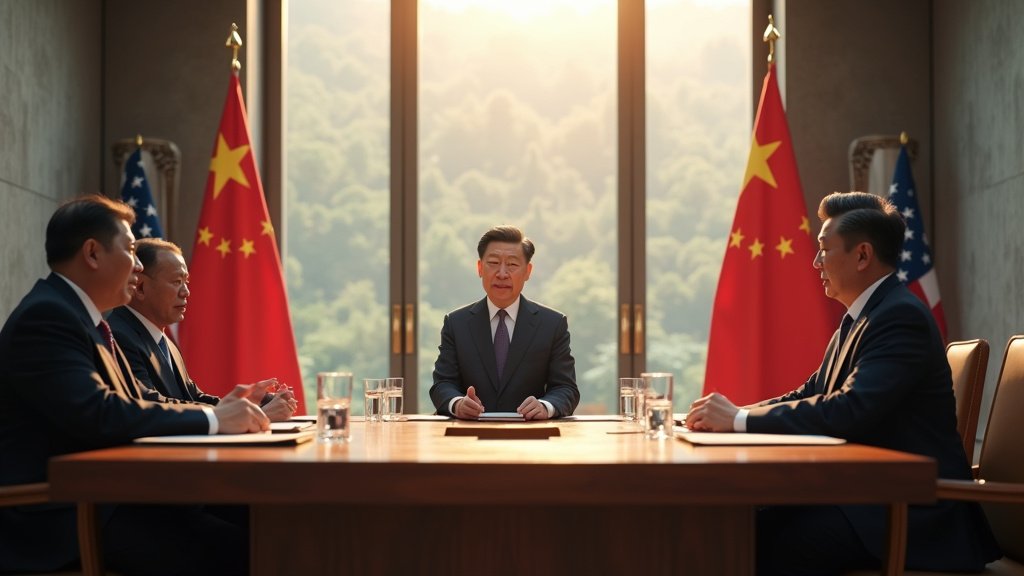GYEONGJU, South Korea – South Korean President Lee Jae-myung declared on October 31, 2025, that the Asia-Pacific region stands at a “critical inflection point” as the **Global Trade Order** undergoes rapid and profound shifts. Speaking at the opening of the Asia-Pacific Economic Cooperation (APEC) summit in Gyeongju, President Lee emphasized the urgent need for cooperation and solidarity to navigate deepening global economic uncertainties and to reinforce the prevailing **Global Trade Order**.
A Region at a Crossroads in the Global Trade Order
President Lee’s address highlighted the significant challenges confronting the international trade landscape, stating, “The free trade order is undergoing dramatic changes, global economic uncertainty is deepening, and trade and investment are losing momentum.” He cautioned that the world is witnessing “changes unseen in a century” that are accelerating, making the current juncture a pivotal moment for regional and global economies. The APEC region, a colossal economic bloc accounting for 50% of global trade and 61% of global GDP, is at the forefront of these transformations and the evolving **Global Trade Order**.
This year’s **APEC summit** convened amidst a backdrop of escalating geopolitical tensions and rising protectionist measures, all contributing to an unstable and uncertain environment for global development. The growing fragmentation of the world economy further exacerbates these challenges, threatening the momentum of trade and investment that has historically driven prosperity. Navigating these **free trade challenges** is paramount for **supply chain stability**.
Key Players and a Call for Unity in the Global Trade Order
The summit was attended by influential leaders and representatives, including Chinese President Xi Jinping and US Treasury Secretary Scott Bessent, who represented the United States. President Lee acknowledged that diverging viewpoints are inevitable but stressed the imperative of working together to preserve the **Global Trade Order**. “It is clear we cannot always be on the same side, but we must work together to achieve common prosperity,” Lee stated, drawing a parallel to ancient Korean diplomacy that emphasized finding coexistence amidst differing opinions.
President Xi Jinping, addressing the summit, pledged China’s commitment to defending global free trade and strengthening **multilateral cooperation**. He urged member economies to build an Asia-Pacific community with a shared future and to keep industrial and supply chains stable, positioning China as a proponent of an open regional economic environment. Representing Washington, Treasury Secretary Scott Bessent outlined the US approach, emphasizing the rebalancing of trade relationships to ensure “fair and reciprocal terms” and the investment in resilient production networks, critical for the future of the **Global Trade Order**.
Navigating Economic Storms and Preserving the Global Trade Order
APEC, established in 1989, has historically served as a vital engine for economic growth and a crucial platform for regional economic integration. However, recent years have seen its effectiveness challenged by geopolitical strains and a decline in consensus-building, with joint declarations proving difficult to adopt. This year, under the theme “Building a Sustainable Tomorrow,” leaders aimed to foster greater connectivity, spur innovation, and create a more resilient future for **Asia-Pacific cooperation**, ensuring **supply chain stability** amidst **economic uncertainties**.
The economic outlook for the APEC region projects a slowdown in growth for 2025-2026, with an estimated GDP growth range of 2.6% to 2.7%, a decline attributed to trade tensions and protectionist policies. Global trade volume is also expected to contract slightly, contrasting with previous forecasts of expansion. Analysts suggest that intra-regional trade and market diversification are becoming increasingly critical for developing economies to mitigate risks associated with global volatility and protectionist measures, impacting the stability of the **Global Trade Order**.
The Path Forward for the Global Trade Order
In his concluding remarks, President Lee reiterated that cooperation and solidarity are the most reliable paths toward a better future, offering a “clear solution” to the present economic challenges and the shifting **Global Trade Order**. The summit in Gyeongju serves as a critical moment for the world’s leading economic forum to address the systemic shifts underway and chart a course for shared prosperity and stability in an increasingly complex global landscape. The news from the summit underscores the delicate balance of cooperation and competition that defines the current world economy and the challenges to the **Global Trade Order**.

